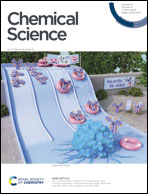Compact hydrophilic electrophiles enable highly efficacious high DAR ADCs with excellent in vivo PK profile†
Abstract
The recent success of antibody–drug conjugates (ADC), exemplified by seven new FDA-approvals within three years, has led to increased attention for antibody based targeted therapeutics and fueled efforts to develop new drug-linker technologies for improved next generation ADCs. We present a highly efficient phosphonamidate-based conjugation handle that combines a discrete hydrophilic PEG-substituent, an established linker-payload and a cysteine-selective electrophile in one compact building block. This reactive entity provides homogeneous ADCs with a high drug-to-antibody ratio (DAR) of 8 in a one-pot reduction and alkylation protocol from non-engineered antibodies. The compact branched PEG-architecture introduces hydrophilicity without increasing the distance between antibody and payload, allowing the generation of the first homogeneous DAR 8 ADC from VC-PAB-MMAE without increased in vivo clearance rates. This high DAR ADC exhibits excellent in vivo stability and increased antitumor activity in tumour xenograft models relative to the established FDA approved VC-PAB-MMAE ADC Adcetris, clearly showing the benefit of the phosphonamidate based building-blocks as a general tool for the efficient and stable antibody-based delivery of highly hydrophobic linker-payload systems.

- This article is part of the themed collections: 2023 Chemical Science HOT Article Collection and 2023 Chemical Science Covers


 Please wait while we load your content...
Please wait while we load your content...